Addicting and easy to handle, this Homemade Pie Crust will be your go-to pie crust recipe. Despite how you use it – hot pies, cold pies, or hand pies – you’ll get a delicate flaky holding vessel every time! If you are interested in an ALL BUTTER Pie Crust, I have that recipe here.
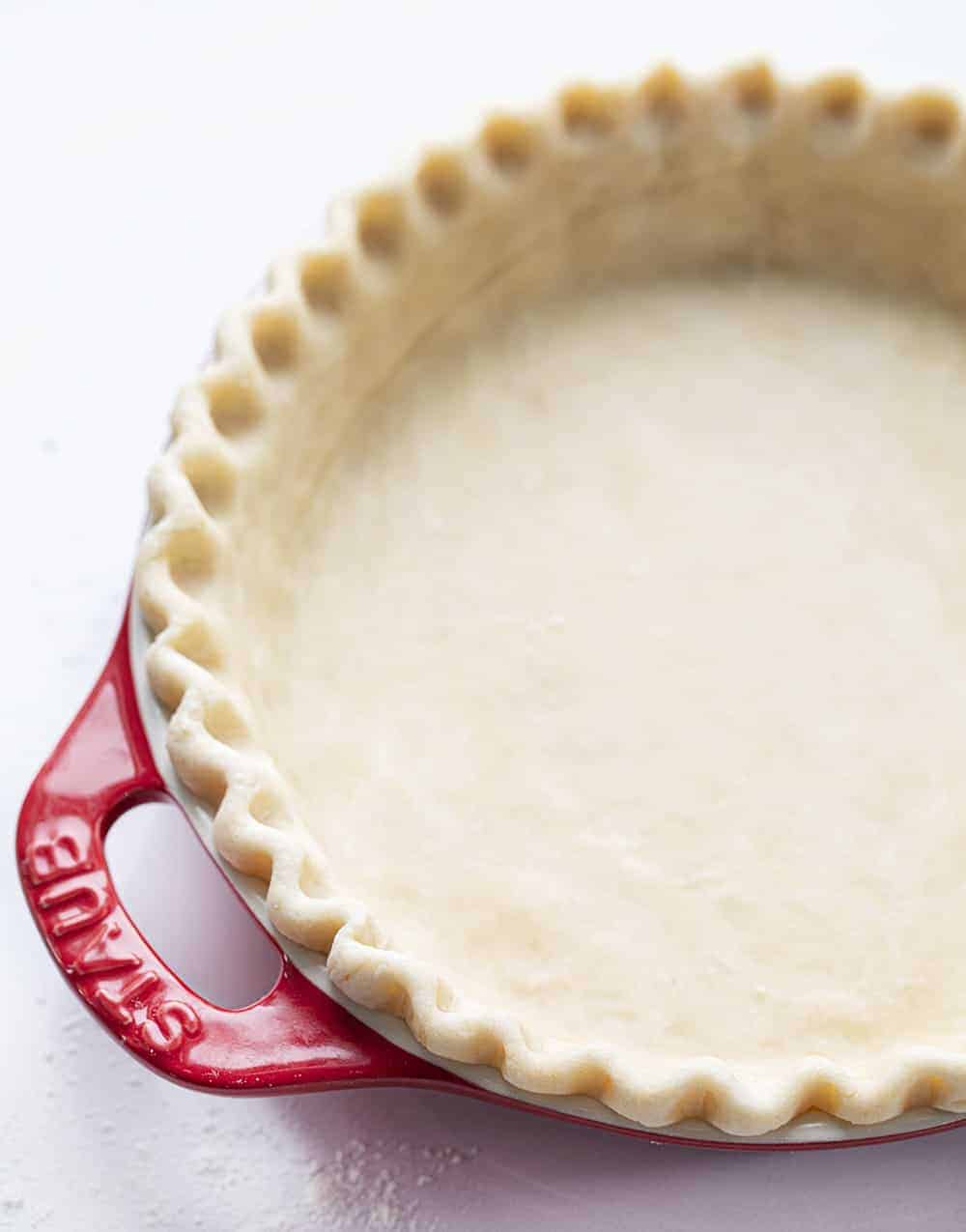
Homemade Pie Crust
This homemade pie crust is a no-fail pie crust that is my go-to crust for everything that needs, well, a crust. It is light and flaky and perfect for anything from apple pies to pot pies to Pop Tarts! The recipe is super simple, and I know you can do it!
Now, I know that everyone has their favorite homemade pie recipe. And yes, mine happens to be with shortening.
Can I Substitute Lard?
Yes! Let me explain. Shortening is 100% fat, which helps pie crusts (like this one) and pastries turn out so flaky and crumbly. And because shortening is all fat, it is hard to make substitutions. If you do have to substitute for shortening, your best bet is lard because it is also 100% fat. If using lard in place of shortening, use 2 tablespoons less of lard for every one cup of shortening.
Can I Use Margarine?
So, can you use butter or margarine in place of shortening or lard? It’s not your best bet in this recipe. Butter is 80% fat, which is close but made of water, which may keep the crust from being light and flaky. Margarine has been used to replace shortening because it is also made with vegetable oil, but it can be as low as 35% fat.
Making any substitutions in recipes can have an effect on the final product.
How to Transfer Rolled Dough to the Pan
There are two methods I use often.
- Once your dough is rolled out on the floured surface, you simply roll it onto the rolling pin and then unroll it into your pie plate. Do not stretch the dough to fit the pie pan, it will shrink from the edge if you do. Just let it naturally fall into the pan and press down gently if needed.
- The second method is folding. With cold hands, fold the top half of the dough over the bottom half, creating two layers of dough. Fold this in half again, this time folding the left half over the right. Transfer to pie pan and place in the bottom (right or left side depending on how you folded) and unfold it into the dough.

Hot Pies
For a hot pie, divide the chilled dough in half and set it on a flour work surface. Roll out half of the dough to about 1/4 inch thickness and then transfer it to a 9-inch pie pan.
If the hot pie is covered, roll the second half of the dough to about a 1/4-inch thickness. Bake the pie as instructed in the recipe. Store any remaining dough by wrapping tightly in plastic and refrigerating.
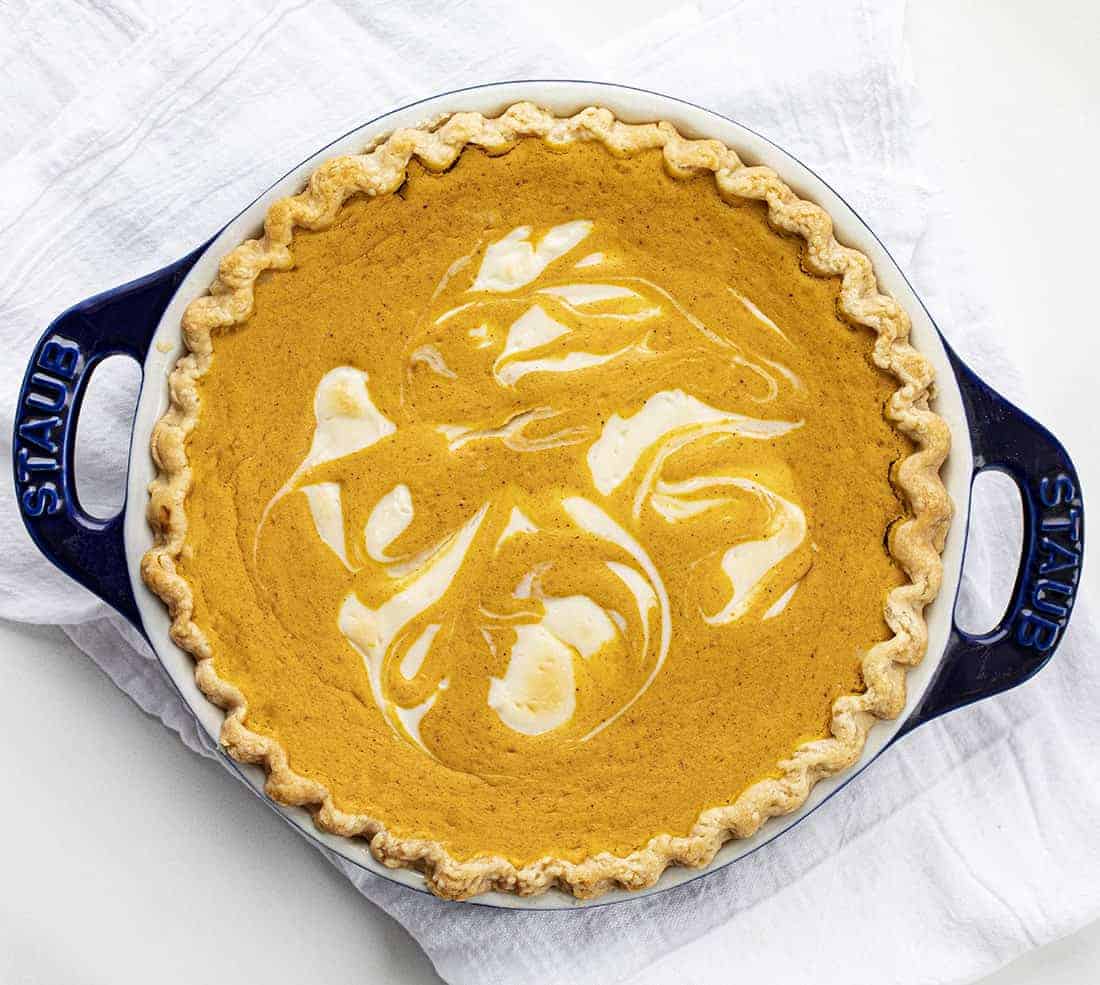
Cold Pies
To use this homemade pie crust for a cold pie, divide the chilled dough in half and set it on a flour work surface. Roll out half of the dough to about 1/4 inch thickness and then transfer it to a 9-inch pie pan. Continue with the instructions of the cold pie recipe you are using.
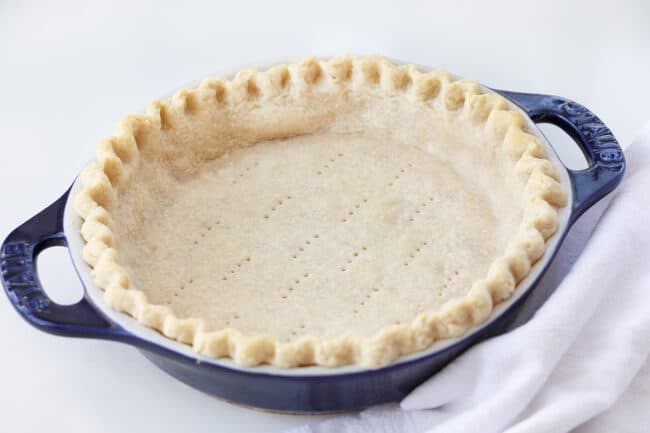
Docking a Crust vs. Pie Weights
Before baking the crust, be sure to dock it. To dock the crust simply means to poke holes in the crust with a fork. This will help the crust to cook more evenly and prevent any pockets or bubbles from forming in the crust. If you dock the crust, you do not need to weigh the crust down.
If you choose to use pie weights (as opposed to docking), loosely fit aluminum foil over the pie dish and weigh it down with pie weights, raw rice, or uncooked beans before baking according to the recipe. The only time I prefer using pie weights is when the filling is runny, as when baking a quiche.
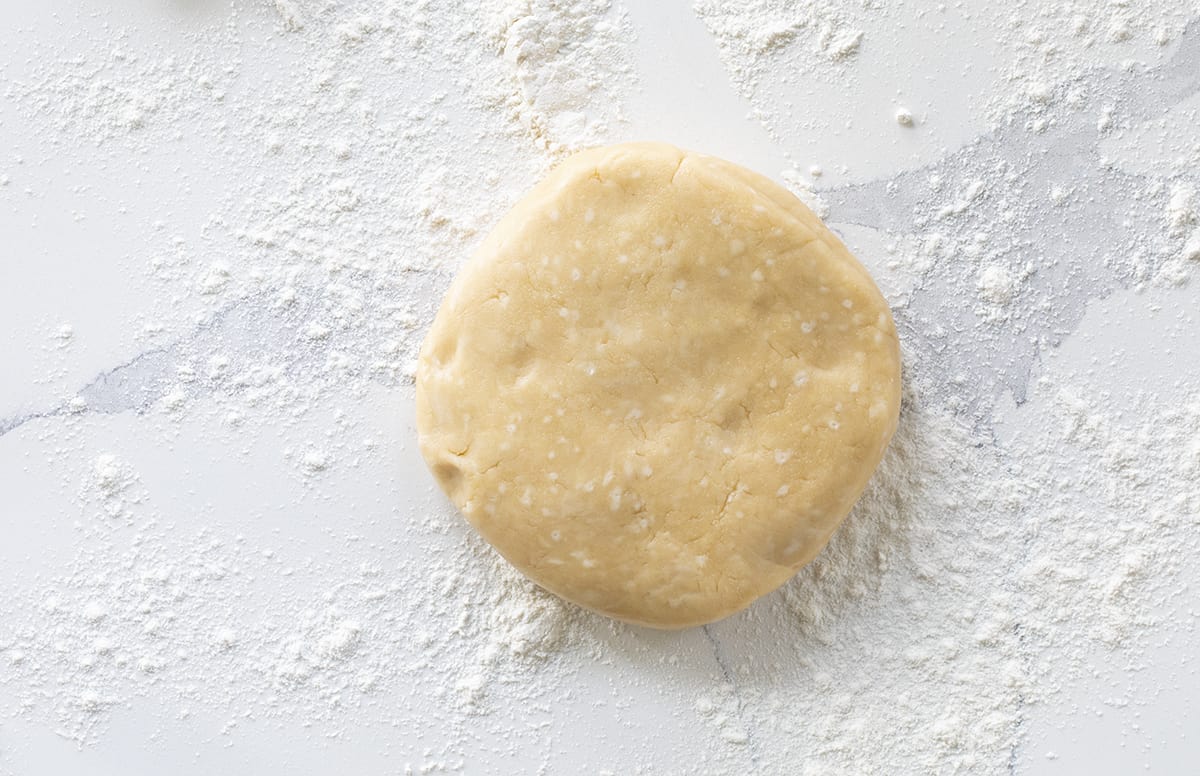
Freezing and Thawing Pie Crust
To Freeze: You can absolutely freeze this pie dough. Shape the dough into a disc, roughly 6-inches in diameter. Lightly dust both sides with flour and then wrap it tightly with plastic wrap. Then either place it in a freezer-safe bag or wrap it tightly in aluminum foil. Be sure to label and date. It should last 6 months in the freezer.
To Thaw: When you are ready to use the pie crust, place it in the refrigerator for 24 hours or overnight. When you are ready to start the pie filling, remove the dough from the refrigerator for about 15 minutes, or while you are preparing the filling.
Recipes with Homemade Pie Crust
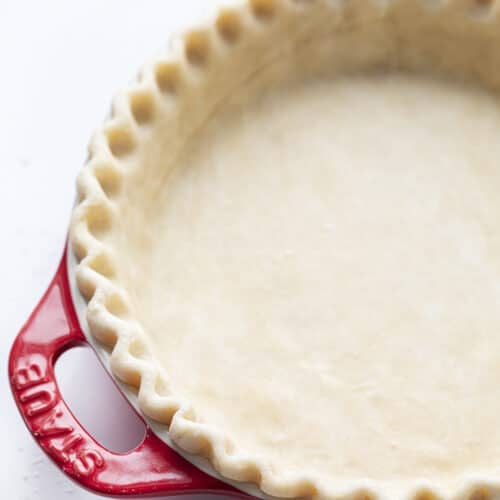
Homemade Pie Crust
Ingredients
- 4 cups (500 g) all-purpose flour
- 1 tablespoon granulated sugar
- 1½ teaspoons kosher salt
- 1½ cups (307.5g) shortening, cubed*
- 1 large egg, beaten
- 1 tablespoon vinegar
- ½ cup (118 g) water
Instructions
- In the bowl of a food processor**, pulse together the flour, sugar, and salt until combined. Add the shortening and pulse until pea-sized crumbs form. Transfer the dough to a large bowl and bring the dough together with a wooden spoon.
- In a small bowl, whisk together the egg, vinegar, and water. Pour over the dough and mix until combined (dough will be sticky). Form the dough into a disc shape and wrap securely with plastic wrap. Chill it in the refrigerator for at least 1 hour before rolling.
Hot Pie
- For a hot pie (e.g. with a filling that needs to be baked), divide the chilled dough in half on a generously floured work surface.
- Roll half of the dough to ¼-inch thick and transfer to a 9-inch pie dish. Repeat with the second half of the dough if the pie is covered.
- Bake as instructed in the recipe. Wrap any remaining dough in plastic wrap and store in the refrigerator.
Cold Pie
- For a cold pie (e.g. with a filling that doesn't need to be baked), divide the chilled dough in half on a generously floured work surface. Roll half of the dough to ¼-inch thick and transfer to a 9-inch pie dish.
- Continue by following the instructions of your cold pie recipe. Wrap any remaining dough in plastic wrap and store in the refrigerator.
Notes
Did you make this recipe?
Thank you for making my recipe! You took pictures, right? Well go ahead and post them on Instagram! Be sure to mention me @iambaker and use the hashtag #YouAreBaker.
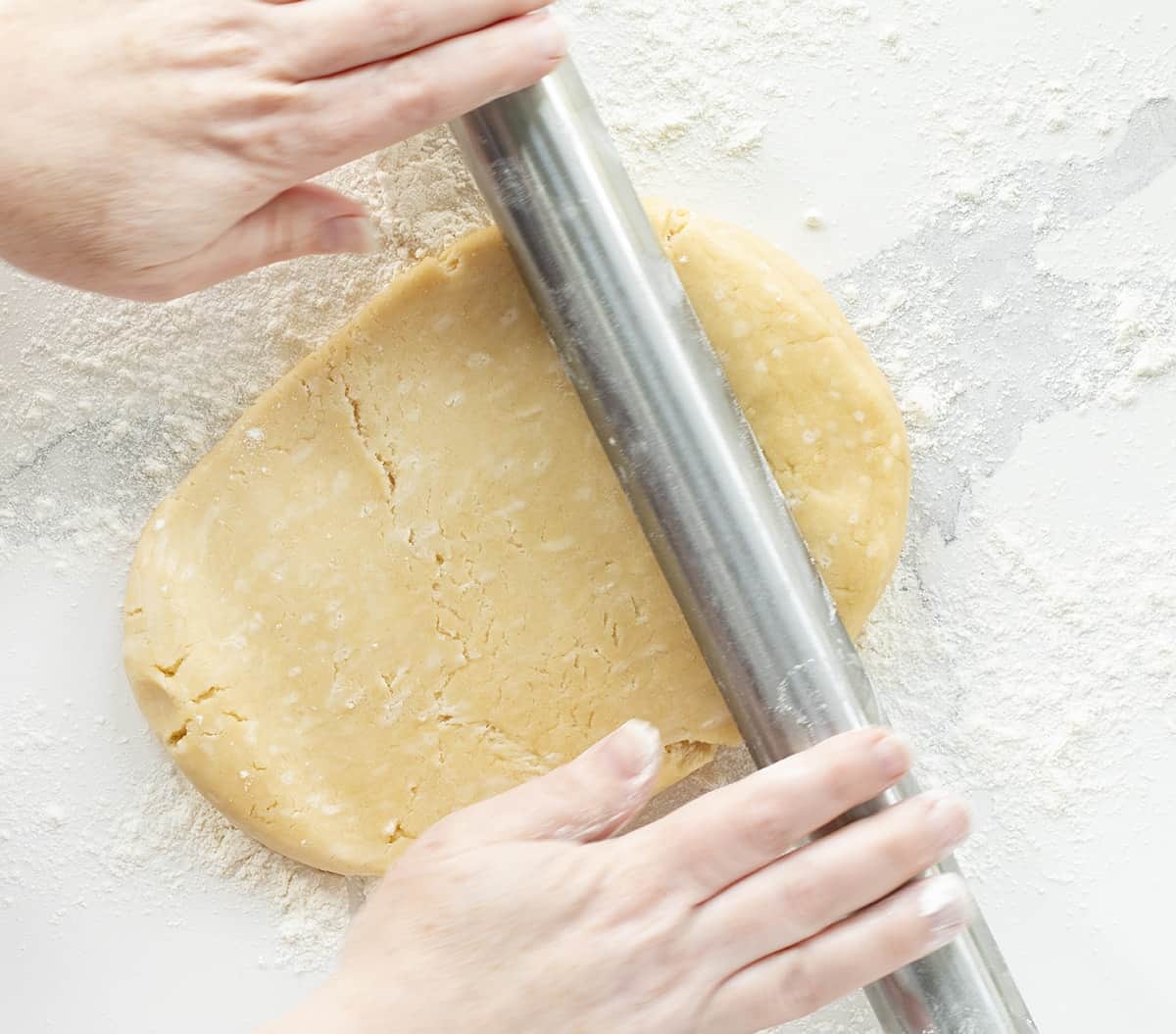
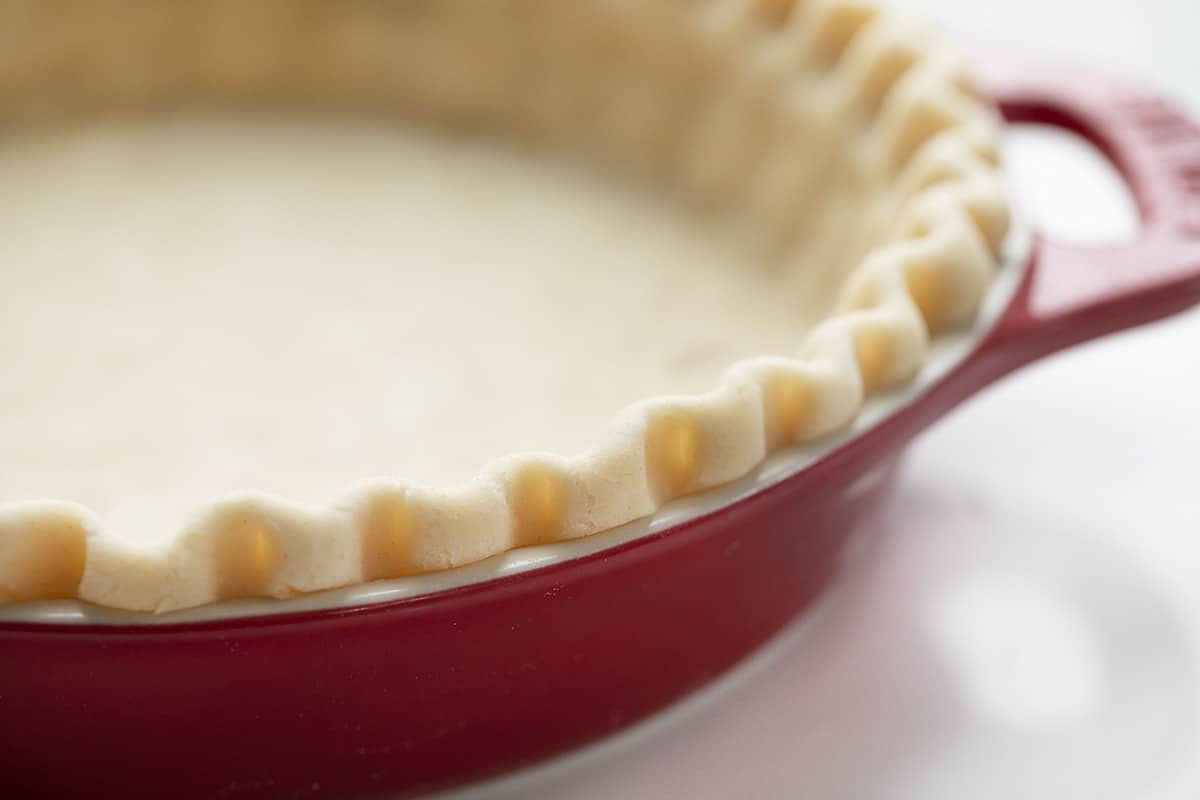
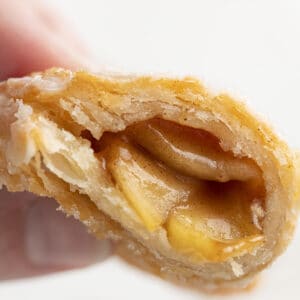
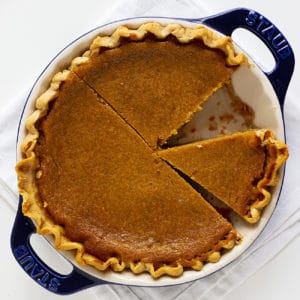
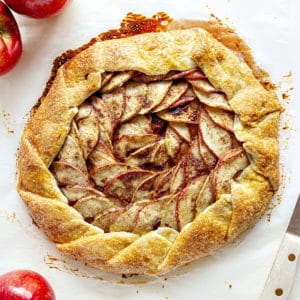
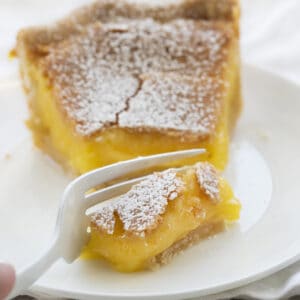



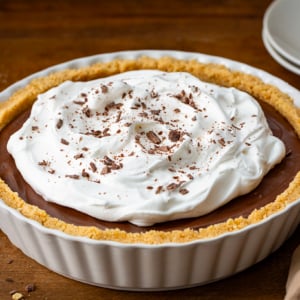







I come from New York and had wonderful pie crust. Now in fl it doesn’t come out the same any suggestions 2 cups flour 3/4 cup d
Shorting salt 6 table cold water. Thanks
Sylvia,
Are you using the same brand of flour that you used in NY? National brands of “all purpose”, like Gold Medal, tend to be consistent across the country, but regional brands of “all purpose”, including store brands, are not always so. All purpose flour brands in the south are usually softer and lower protein, changing up the crust. A different brand of butter/shortening can have similar effect. And last but not least is a new oven to get to know. I would start with the flour.
I don’t have a food processor, will it work if I use a blender?
I’m going to try your pie crust to make an apple pie I love your recipes.
I’m from Trinidad and Tobago.
Can this recipe be cut in half? My food processor is small and won’t hold 4 cups of flour.
Sure
Hey y’all. I made an apple pie and used your crust recipe. I was nervous because it was different. Like you said it was sticky. Rolling the dough out I used more flour than usual. Good news it turned out perfect andflaky. No one could taste the vinegar. It proves that at 74 years old you can teach an old dog new tricks!
Hello, I am confused how I can use this recipe for a cold pie recipe without pre-baking crust. I can’t imagine adding my ingredients and chilling to set is going to be safe or taste good. If that is not intention, instructions for blind baking should be added for clarification.
This is what is says in the post:
“Docking a Crust vs. Pie Weights
Before baking the crust, be sure to dock it. To dock the crust simply means to poke holes in the crust with a fork. This will help the crust to cook more evenly and prevent any pockets or bubbles from forming in the crust. If you dock the crust, you do not need to weigh the crust down.
If you choose to use pie weights (as opposed to docking), loosely fit aluminum foil over the pie dish and weigh it down with pie weights, raw rice, or uncooked beans before baking according to the recipe. The only time I prefer using pie weights is when the filling is runny, as when baking a quiche.”
I want to make a fresh peach pie which calls for a pre baked crust.
There is no temperature in this recipe for a pre baked crust.
Docking instructions but no temperature.
Hi Patricia – the baking time and temps will be on the recipe you are making. For instance, if you have a recipe for fresh peach pie, it will tell you how long you need to bake it. This is just a recipe for crust, and works in any recipe you want to make a pie with.
What temperature and for how long do you bake an empty crust?
I understand you don’t bake your Graham Cracker crust, but this Flour/shortening/egg etc
should get baked.
I’ve been making pie crust using the Crisco can recipe for at least 45 years. I wanted to try something different and found your recipe. It was wonderful. So flaky but kept it’s shape and easy to handle. I made a fresh peach pie and, because it was precooked, it didn’t get soggy. I also learned a cool way to transfer your crust to the pie pan. Roll out on wax paper and when ready to transfer slip a thin plastic cutting board under the waxed paper, center the pie plate on top and turn over using the board.
All of your recipes I’ve tried have turned out so delicious. Thank you for your hard work posting your recipes.
Hi,
I make homemade pie crust with vegetable shortening-using -crisco …
From your recipe why egg and vinegar?
I don’t eat eggs , can I just use vinegar and water?
What is the role of vinegar? How it helps the pie dough?
Thanks!
I’m confused by the recipe. I’ve never seen a two crust recipe call for 4 cups of flour. Usually it is about half that much flour. Just checking to make sure this is correct. Thanks!
It’s correct. 🙂
Can I use butter instead of shortening?
If you do the result will not be the same, as butter is only 80% fat, not 100 % as is shortening or lard.
Your pie crust looks awesome. Can you substitute lard for shortening? My mom always used Tenderflake lard for her pies. Yours look so flaky!
Yes, you can use lard.